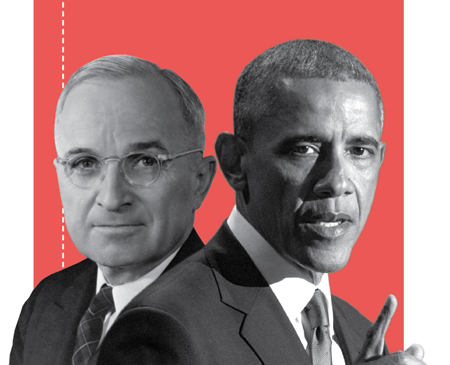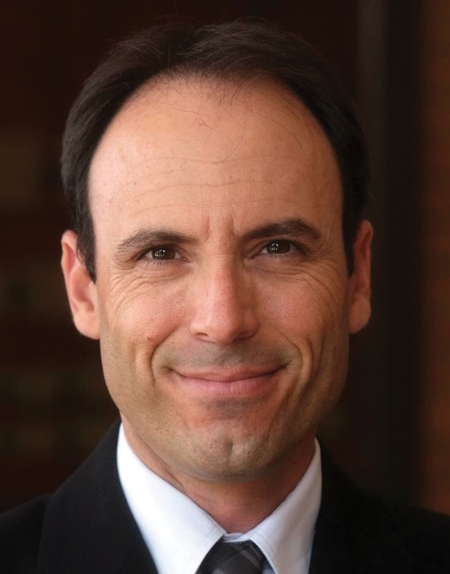Gun War: Congress has been silent on guns, but states haven't, so change is on the horizon

Shutterstock
The nickname “do-nothing Congress,” made famous by President Harry S. Truman in 1948, could have been revived to describe legislators’ seeming antipathy toward federal gun legislation during most of the Obama administration. Almost nothing happened to address America’s gun laws, whether to liberalize or to tighten them up.
Even after the Dec. 14, 2012, shooting in which 20 children and six adults were killed at Sandy Hook Elementary School in Newtown, Connecticut—when prognosticators proclaimed that this was the outrage that would make Congress take action—federal legislators were unable to pass a single new gun law.
States, however, became hives of activity. As state legislators passed more and more laws that affected gun use and ownership, one could reasonably predict which would impose restrictions on gun rights and which would remove them based on whether the state was red or blue.
Take the red state of Georgia. In 2014, it watered down its law that permitted religious institutions to ban guns in their facilities. That same year, progressive California trended the opposite way, enacting background checks for ammunition purchases.
However, Congress might soon enter the fray. President Donald Trump’s election, along with Republicans’ seizure of control of the U.S. Senate and continued control of the House of Representatives, bodes well for gun-rights advocates and ominously for those who seek more federal legislation that curbs gun rights.
“Everything’s different now,” says Adam Winkler, author of Gun Fight: The Battle Over the Right to Bear Arms in America, who teaches constitutional law with a specialty in the Second Amendment at the UCLA School of Law.
“A lot of people were expecting that Hillary Clinton would win the White House. That would mean a continuation of more of the same—in a sense, a White House committed to gun control and a Republican House committed to gun rights, with a stalemate ensuing and no significant legislation passed.”
With Trump in the White House, “we’re going to see a liberalization of America’s gun laws,” Winkler says. “The National Rifle Association and Congress are no longer on the defensive but on the offensive. They’re no longer trying to defeat Barack Obama’s agenda and putting their own agenda on the back burner. The NRA has a very clear, affirmative agenda it’s going to pursue and likely going to get enacted.”
It’s the moment gun proponents have been waiting for. Michael Hammond, legislative counsel for Gun Owners of America in Springfield, Virginia, says nationwide concealed carry reciprocity—which would require all states to recognize gun owners’ right to carry concealed weapons as permitted by their home state—is the top priority for his group and the NRA, which did not respond to interview requests. And that’s just for starters.
ALL OVER THE MAP
Those who track and study gun laws in the United States say the slaughter of elementary school children at Sandy Hook rattled many Americans in a way other mass shootings never did. State after state reacted by legislating gun use—although not always restricting it.
“Many people feel nothing changed after Newtown, but that’s not true,” Winkler says.
Almost half of Americans live in states that have had new and restrictive gun control laws enacted since Newtown, according to Winkler. “Before then, the Democratic Party had sort of given up on gun control. It was considered a loser,” he says. “In 2008 and 2012, Barack Obama didn’t talk about gun control, and that’s remarkable given how central gun control became to his identity. He staked out the issue in December 2012, a month after his re-election, and it was fed by a steady diet of mass shootings and horrific incidents with firearms after then.”

President Harry S. Truman and President Barack Obama. Photo Illustration by Monica Burciaga/Shutterstock.
The post-Newtown gun-control momentum also stems from the re-emergence of former New York City Mayor Michael Bloomberg, Winkler notes.
Before Newtown, he funded several gun-control groups, including Mayors Against Illegal Guns and Moms Demand Action for Gun Sense in America. Then in 2014, Bloomberg launched the umbrella organization Everytown for Gun Safety, under which those entities would operate going forward. He also committed $50 million of his personal wealth to building grassroots support for those efforts.
“The Everytown gun violence program is essentially a Michael Bloomberg production, and that has created an economically powerful and relatively strategically sophisticated pro-gun-control lobby group as a permanent and sustained presence,” says Franklin Zimring, a professor at the University of California at Berkeley School of Law. “It’s matching the NRA, but it still has a long way to go to fully match that power.”
Gun-control advocates have indeed had successes. The San Francisco-based Law Center to Prevent Gun Violence, which tracks and analyzes gun laws nationwide, reports that more than 160 laws that restrict gun use or ownership were passed in 42 states and the District of Columbia after Newtown.
Among the strongest is New York’s SAFE Act, passed in 2013. It includes provisions that broaden the definition of assault weapons to include more firearms and bans sales of gun magazines with a capacity of more than seven rounds.
“We’ve seen an unprecedented wave of smart gun laws being passed, especially since the tragedy at Newtown,” says Hannah Shearer, a staff attorney at the law center. In March 2016, the group merged with the Americans for Responsible Solutions Foundation, an entity founded by former U.S. Rep. Gabrielle Giffords and her husband, retired Navy Capt. Mark Kelly, after she survived a gunshot wound to the head. “That includes states that are very conservative.”
The scope of new gun-control measures is broad. “We’re seeing a lot of states try to step up and close the loopholes Congress failed to close after Newtown,” Winkler says. They include universal background checks of all buyers; bans on so-called assault rifles and high-capacity magazines; and restrictions on what gun-control advocates consider especially dangerous weapons, such as assault weapons.
“A number of states have also passed laws for family members worried about someone going through a mental health crisis that gives them the ability to report that to local police and possibly take someone’s firearms away temporarily,” Winkler says. “Several states have also strengthened domestic violence bans. There are more prohibitions on people under restraining orders or who’ve been convicted of domestic violence, even in states where you wouldn’t expect gun control to pass.”
Louisiana, for example, is among the states that have passed laws to prevent people convicted of domestic abuse from carrying a concealed weapon.
“That type of law seems to not have a lot of, or as many, NRA members politicking against it,” says Melissa Hamilton, a visiting criminal law scholar at the University of Houston Law Center. “Even in the recent past, they would have gotten involved. But they have so many issues to address that they don’t want to be standing up for domestic violence perpetrators.”
But in other states, legislators have liberalized gun laws. They pushed to allow guns in places where they’d been prohibited for a long time, says Winkler, such as in schools and on college campuses. Those provisions became law in Tennessee and Texas, and Shearer argues that they endanger students and professors.
In April 2014, Georgia passed the Safe Carry Protection Act, what critics dubbed the “guns everywhere” law, which permits residents to carry guns in more places than ever, including churches.
“There’s also been a rise in permitless concealed carry laws,” Winkler says. “You’ve also seen some laws requiring courts to apply strict scrutiny to gun laws. A lot of state gun-control laws are challenged not under the Second Amendment but under state constitutions, and states are pretty deferential to those constitutions. So legislatures in places like Missouri and Indiana now require courts to apply higher scrutiny.”
A few states also have moved toward what’s been called constitutional carry. That’s the ability to carry a gun without a permit or training. “Some of these laws endanger the public in ways that we haven’t seen before,” Shearer says.
Hammond disagrees, pointing to states that have permitted constitutional carry without issue, such as Alaska and Vermont. He says his tracking shows that the majority of states are in the business of loosening gun laws.
“I recently did a brief count, and I can think of nine states in the last maybe six years that amended their laws to be more restrictive,” he says. “On the other hand, I can think of about 30 states that have amended their gun laws to be more pro-Second Amendment. I don’t normally agree with Adam Winkler. But he recently said there was a very small number of states that are anti-gun, and that everybody else seems to be moving in the other direction. I agree with that.”
CULTURE CLASH
The division among the states on gun regulations isn’t likely to change anytime soon. That’s in part because of how they shake out culturally and because the makeup of their legislatures isn’t shifting considerably.
States are “all over the place on gun control,” Hamilton says. “A few are doing nothing at all. Those are primarily states with smaller populations and more rural communities. Take North Dakota. I haven’t seen it on the map doing anything. It’s the kind of environment in which residents have had guns but not necessarily for personal protection; they’re generally ranchers and people who need and use guns to kill predators or for meat.”
Hamilton’s research has led her to conclude that the state divide depends on factors such as whether a state has urban populations with heavy drug sales and gun violence, as well as how many of the state’s residents are hunters and use guns for legitimate reasons.

Virginia-based gun group leads the charge: The top priority for the lobbying group Gun Owners of America is making concealed carry reciprocity a nationwide mandate. This would require states to recognize gun owners’ right to carry concealed weapons as permitted by their home state.
“I’m a former police officer, and I see the Second Amendment and gun control through the eyes of having been on the street and having a gun on my hip,” Hamilton says. “You have different cultures as well as politics. As you can imagine, red states are more likely to be affirmatively passing laws allowing greater use of guns. The more blue states are on the forefront of passing restrictions.”
Darrell A.H. Miller, a professor at Duke University School of Law who analyzes the Second Amendment from a constitutional law perspective, generally agrees. “It’s fair to say that if you live in a red state and you have most of the branches of the state government controlled by Republicans, those states have tended to loosen their firearms regulations,” he says.
“Whereas if you live in a blue state, those states have tended to tighten them up—not uniformly, and there are always exceptions. There have been states, such as Arizona, that had pro-gun legislation passed and then vetoed by a Republican governor. I think it’s fair to say gun politics very much mirrors the divided politics of the United States.”
None of that is likely to change based on last November’s election results. For example, the gun-control lobby succeeded in getting voters to approve universal background checks in Nevada (although the FBI and the state attorney general determined in December that the measure could not be enforced). But gun-rights advocates beat back a similar effort in Maine.
“By and large, the state election results will repeat the emerging trend of the last six years, and that is a move to Republicans having about two-thirds of the state governorships and holding about 70 of the 98 partisan legislative bodies,” Hammond says. “That trend hasn’t reversed, much to Democrats’ moaning and groaning. I think we’ll continue to have that disparity.”
Winkler’s prediction is growing polarization among the states. “Many will increasingly push to make their laws more permissive,” he says. “They’ll do things like eliminating permitting for concealed carry and allowing guns on college campuses. There’s an aggressive gun-rights agenda, and it’s being pursued in many states. And there’s a very active gun-control agenda, and it’s being pursued, too.”
Another factor affecting the direction of state gun legislation has been mass shootings, according to an October 2016 working paper, The Impact of Mass Shootings on Gun Policy. Michael Luca, an assistant professor of business administration at Harvard University, conducted the study with his colleague Deepak Malhotra and doctoral student Christopher Poliquin.
They concluded that mass shootings can lead to significant policy responses, and that policymakers might use them as a chance to propose bills that are consistent with their ideology.
To reach their conclusions, Luca and his colleagues analyzed the effects of shootings in which four or more people, aside from the perpetrator, perished in an incident unrelated to gangs, drugs or other criminal activity. Those types of shootings, they found, accounted for about 0.13 percent of all gun deaths and 0.34 percent of gun murders between 1989 and 2014. But a single mass shooting leads to a 15 percent increase in the number of firearms bills introduced within a state in the year afterward.
“This effect is largest after shootings with the most fatalities—and holds for both Republican-controlled and Democrat-controlled legislatures,” according to the study.
The types of laws enacted depend on the party in power.
“Republicans are more effective at systematically loosening laws than Democrats have been at systematically tightening them,” Luca says. In states controlled by Republican legislatures, a mass shooting increases the number of new laws that loosen gun restrictions by 75 percent. However, the corollary isn’t true. The researchers found no significant effect of mass shootings on laws enacted by state legislatures controlled by Democrats.
“Certainly, there are high-profile examples of states with legislatures controlled by Democrats tightening gun laws in the wake of a mass shooting,” Luca says. “But it’s not a statistically significant relationship. The effect we see for Republicans we don’t see for Democrats.”
Luca doesn’t have a scientific answer for why that’s the case yet, although he has a theory.
“My intuition is that there’s more of a systematic push by NRA-backed legislators in the wake of mass shootings to loosening gun laws,” he says.
“It isn’t that legislators are sitting there saying, ‘How are gun fatalities trending over time, and what should we do about it?’ ” Luca says. “It’s that there’s a mass shooting, and that opens a policy window. I think Republican legislators are effective at turning that into legislative action.”
THE WILL OF LEGISLATORS
In contrast to the states, Congress now appears more unified on gun issues. Some members already have launched efforts to reshape the nation’s pro-gun laws.

Adam Winkler. Photo courtesy of Adam Winkler.
It took three days into the new year for Rep. Richard Hudson, R-N.C., to introduce H.B. 38, the concealed carry reciprocity legislation advocated by the NRA and Gun Owners of America. That same day, Rep. Thomas Massie, R-Ky., introduced H.B. 34, which would repeal the Gun-Free School Zones Act of 1990.
Shearer admits the congressional election results have made the work of the Law Center to Prevent Gun Violence more difficult.
“Our operating assessment is that, federally, an uphill battle to pass the kinds of bills we want to pass has gotten harder,” she says. “We’re concerned that Republicans in Congress are trying to introduce bills that are very dangerous. They’re trying to push through dangerous legislation on the state level, and we might see that in Congress, as well.”
Is there any chance Congress will put gun issues on hold while it digs in on other priorities? Hamilton from the University of Houston thinks it’s possible because the electorate was so fractured in 2016.
She also interprets the actions of President Trump and Congress so far as indicating they have other priorities.
“When I’m reading the political headlines, nobody’s talking much about gun rights anymore,” she says. “Also, the NRA has a whole lot of Republican candidates in office, and it doesn’t really have pull in trying to force legislation anymore because those people have already been in office.”
Miller from Duke University sees the landscape differently. “Without question, we’ll see congressional action,” he contends, referring to the quick introduction of the concealed carry reciprocity bill. “It has a realistic chance of getting through the House. Whether it would be filibustered in the Senate is something I don’t know. I can imagine a lot of pro-gun legislation being written and advanced in the next four years, and certainly in the next year or two.”
That’s also Winkler’s expectation. “I think there’s no chance Congress stays its hand on these issues,” he predicts. “I think you’ll see national reciprocity of concealed carry. Donald Trump has already said he supports the legislation.” He thinks Congress can pass it “pretty quickly.”
Winkler also expects a rollback of Obama’s gun-related executive actions. “The truth is that he wasn’t able to get much done,” Winkler says. “But anything he did, the NRA will try to get removed from law.”
That’s another one of the goals of Gun Owners of America. “We’ll be looking at pushing back the nasty anti-gun stuff and repealing Obama’s excessive executive actions, like trolling Social Security to take away guns from people whose checks are sent to guardians,” legislative counsel Hammond says. “All of the anti-gun stuff that Obama has tried to do by executive fiat will be repealed.”
That was Hammond’s prediction in January. And by February, the Republican Congress had undone that very order, reversing an Obama-era regulation requiring FBI background checks for gun owners who received Social Security disability benefits because of a mental health condition, possibly preventing them from buying firearms.
Miller also is unwilling to confidently predict wins for gun-rights advocates, starting with concealed carry reciprocity. “If anything, predictions have been shown to be a complete fool’s game this last election,” he says.
“Who knows what will happen?” Miller asks. I think it’s fair to say the NRA sees an ally in Trump and Republican control of both houses of Congress. And there are vulnerable Democrats in red states who otherwise might want to oppose broadened gun rights. So Republicans can peel some of them off to avoid a filibuster, but maybe not enough.
FULL-COURT PRESS
Increased legislative activity is sure to beget increased legal scrutiny.
In District of Columbia v. Heller in 2008, the U.S. Supreme Court struck down a D.C. law that banned possession of handguns in the home. That marked the first time the high court held that the Second Amendment ensured a person’s right to keep and bear arms for self-defense in the home. In McDonald v. City of Chicago in 2010, the court invalidated laws in the city and suburban Oak Park that effectively prohibited handgun possession by almost all private citizens.
Both were 5-4 opinions, with the late Justice Antonin Scalia, who died in February 2016, in the majority. And Heller left open many questions—the biggest being: Can the Second Amendment protect a right to carry firearms in public, and under what circumstances?
Yet since those two opinions, courts have let stand most gun-control laws passed in recent years. “There have been more than 1,090 decisions since Heller, and 94 percent of smart gun laws have been upheld,” says Shearer, whose organization also tracks Second Amendment challenges to gun laws in state and federal courts.

Melissa Hamilton. Photo courtesy of Melissa Hamilton.
The Supreme Court has shown little appetite to provide further guidance on the reach of the Second Amendment. It has turned down numerous challenges.
In 2014, it declined to hear National Rifle Association v. Bureau of Alcohol, Tobacco, Firearms and Explosives, which challenged the ban on selling guns from federally licensed firearms dealers to people under age 21. It also declined that year to hear National Rifle Association v. McCraw, a case that sought to address whether the right to bear arms applies outside the home.
“Paul Clement, the uber Supreme Court advocate, filed a brief on behalf of the NRA in the ATF case arguing the court had to get involved because the lower courts were doing a massive assault on Heller,” Winkler says. “The justices turned the case down.”
The court’s only pronouncement on the topic since Heller came last year in Caetano v. Massachusetts, which involved the possession of stun guns.
In a per curiam and unanimous decision, the Supreme Court “sent the case back for reconsideration, saying the lower court didn’t apply Heller properly,” Winkler says. “I see that as a signal from the court suggesting it’s not interested in overturning Heller. They expanded it and applied it to a new case with new facts.”
Why has the court declined further review of gun laws? “The most obvious explanation is that there haven’t been major splits in the federal circuits,” Winkler says. “However, let’s be clear. When the justices really want to rule on an issue, they won’t wait for a circuit split. They don’t need and don’t require one. They’ve had a number of opportunities to take cases to clarify the scope of the Second Amendment, and they’ve turned them down. I think that suggests they’re not interested in engaging the issue at this particular point.”
Berkeley Law’s Zimring agrees. “That tells you that firearms control issues and Second Amendment issues aren’t the absolute top priority of America’s supreme constitutional court,” he says. “Heller is very important to people who care deeply about guns. But I’m not sure a lot of those people are on the Supreme Court.”
the future of gun laws
The confirmation of Trump nominee Judge Neil Gorsuch to the Supreme Court may or may not change the status quo. Although Hammond admits it’s a bit of a guessing game predicting how a nominee will rule in the future, he says his research on Gorsuch’s firearms-related rulings suggests he would be as pro-gun as Justices Scalia and Clarence Thomas. Winkler has a similar take.
“I think he’s going to be pretty strongly in favor of a robust view of the Second Amendment,” Winkler says, pointing out Gorsuch’s position in the 2012 case United States v. Games-Perez as “a very powerful statement of his views on the Second Amendment.”
“I don’t think he’s a gun nut,” Winkler says. “I don’t think he’s going to vote to overturn bans on felons possessing firearms. But we don’t know how he’ll view many of the issues that might come before the court. Does he believe the Second Amendment protects the right to carry a gun in public? If so, can the government put a permit on that? And what kind of permitting system can government have? Does he believe bans on assault weapons are permissible? We don’t have much to go on with Judge Gorsuch.”
As with any presidency, another vacancy also could arise. “I’d guess within the next four years, we’re probably not only going to replace Scalia but we could also replace maybe Ruth Bader Ginsburg, Stephen Breyer and Anthony Kennedy,” Hammond speculates. “I’m guessing we’ll come out of this administration with a more useful Heller. It was a more theoretical right, but that would permit a follow-up decision that will allow it to be used to challenge laws like New York’s SAFE Act and California’s restrictions.”
Pure gun-rights issues aren’t the only matters the high court might face in the future. Miller is keenly interested in cases that could pit gun rights against free speech rights. For example, the Florida case Wollschlaeger v. Governor of Florida—nicknamed “Docs v. Glocks”—involved a 2011 state law, the Firearm Owners’ Privacy Act, that prohibited doctors from asking patients about guns in their home.
In February, the 11th U.S. Circuit Court of Appeals at Atlanta determined that the law did not implicate the right to bear arms in Wollschlaeger. But it raised a flag concerning the First Amendment. In a 10-1 decision, the court decided that the law infringed on doctors’ freedom of speech. Although the case was remanded back to the district judge, it could still be appealed to the Supreme Court.
In a similar case in 2016, Glass v. Paxton, three University of Texas at Austin professors argued that their free speech rights would be chilled by allowing implementation of the 2015 state law that permits students to bring guns into college classrooms. In August, a federal court denied the professors’ request to block the law’s implementation.
G.M. Filisko is a lawyer and freelance writer based in Chicago.



